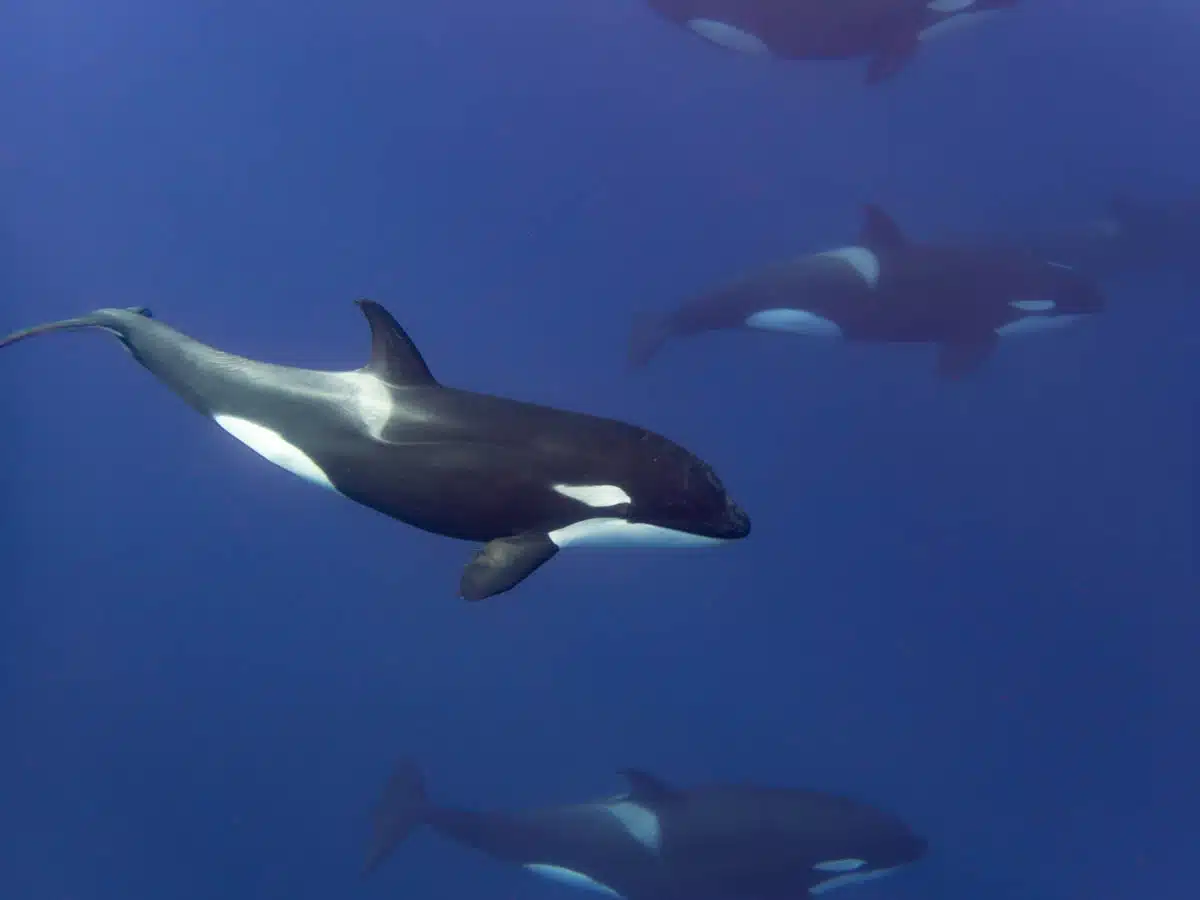
Orcas
In the mid-Atlantic, a cluster of nine islands makes up the Azores. This archipelago, an autonomous region of Portugal, provides the perfect environment for a wide array of marine life, including many types of whales, sharks, and sea turtles. Thanks to the establishment of vast marine reserves, these animals can safely enjoy their lives without worrying about poaching or food supply.
Recently, marine biologist and photographer Jeroen Hoekendijk spent a week in the Azores. Thanks to special permissions arranged with the government, he was able to spend time in the water and document his observations. The results are a spectacular look at what marine life looks like when left to their own devices. From a family of orcas to an endangered loggerhead turtle, Hoekendijk’s imagery reminds us that conservation measures, when done correctly, can be successful.
Many of Hoekendijk’s photos show sperm whales, which were hunted in the water off the islands until the 1980s. These creatures, which are the largest toothed whale—and predator—in the world, can reach up to 60 feet in length. They can also live up to 70 years, with females giving birth every four to 20 years. That made Hoekendijk’s encounter with a young calf, which was already about 16 feet long at just a few months old, all the more special.
“Calves often wait at the surface while their mums feed for giant squid while reaching depths of over 2 kilometers,” he tells My Modern Met. “After I got in the water, I started making clicking noises in my snorkel (sperm whales communicate by making clicks), to which the calf appeared to respond, and it slowly approached me. Being eye-to-eye with a curious sperm whale calf surely was a once-of-a-lifetime experience!”
While that moment already made the trip worthwhile, there was more to come. This included the sighting of false killer whales, which are rarely seen off the Azores, and an endangered loggerhead turtle. Hoekendijk hopes that his work can serve as a reminder of the positive results that conservation efforts can have and inspire others to take care of our oceans—and our planet.
Marine biologist and photographer Jeroen Hoekendijk spent a week in the Azores, known for its rich marine life.
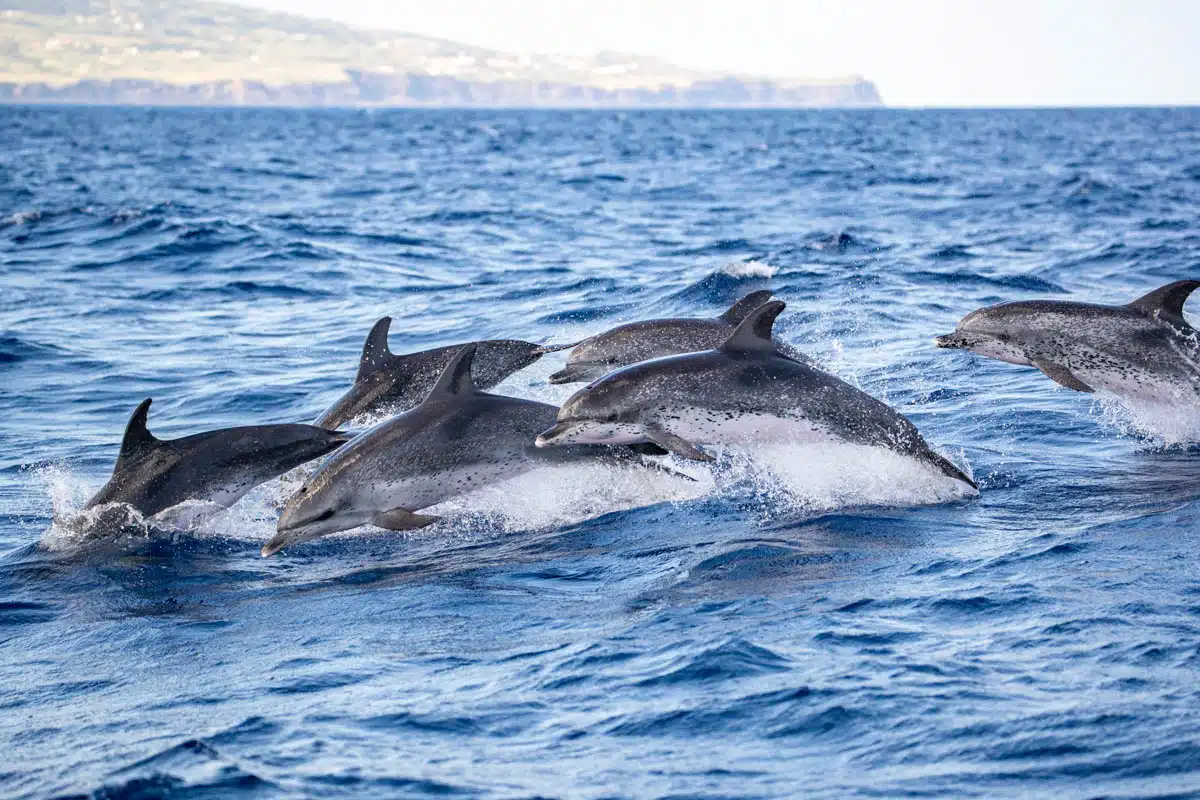
Atlantic spotted dolphins
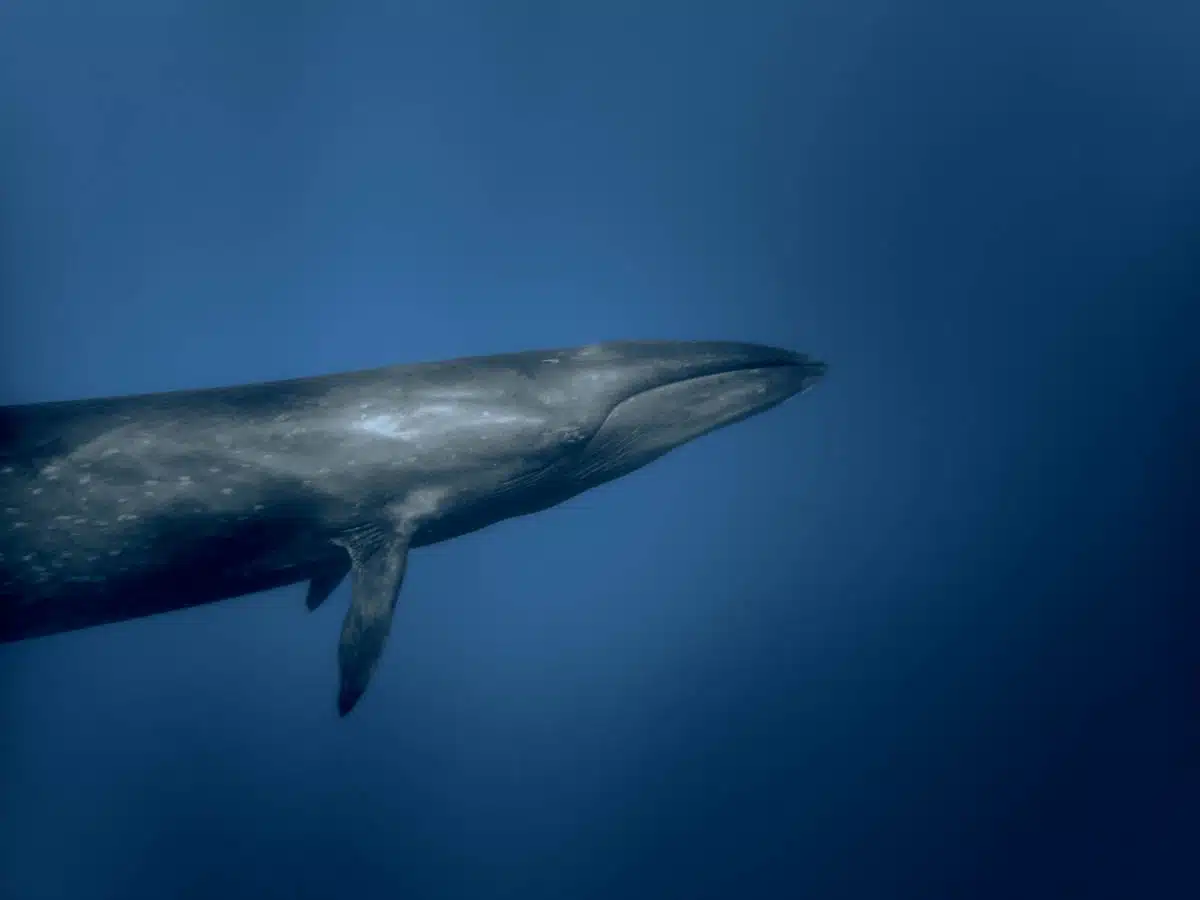
Sei whale
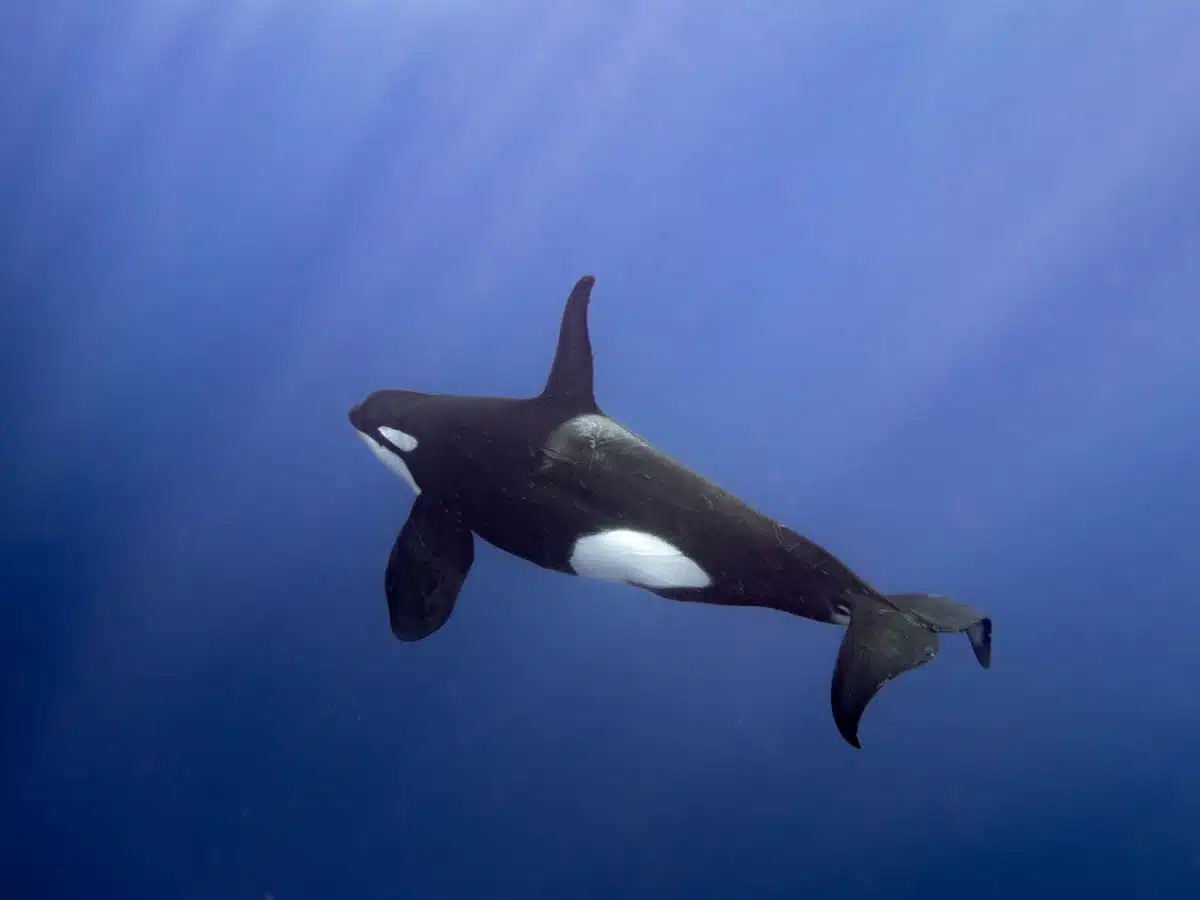
Orca
While there, he spotted many rare and endangered species.
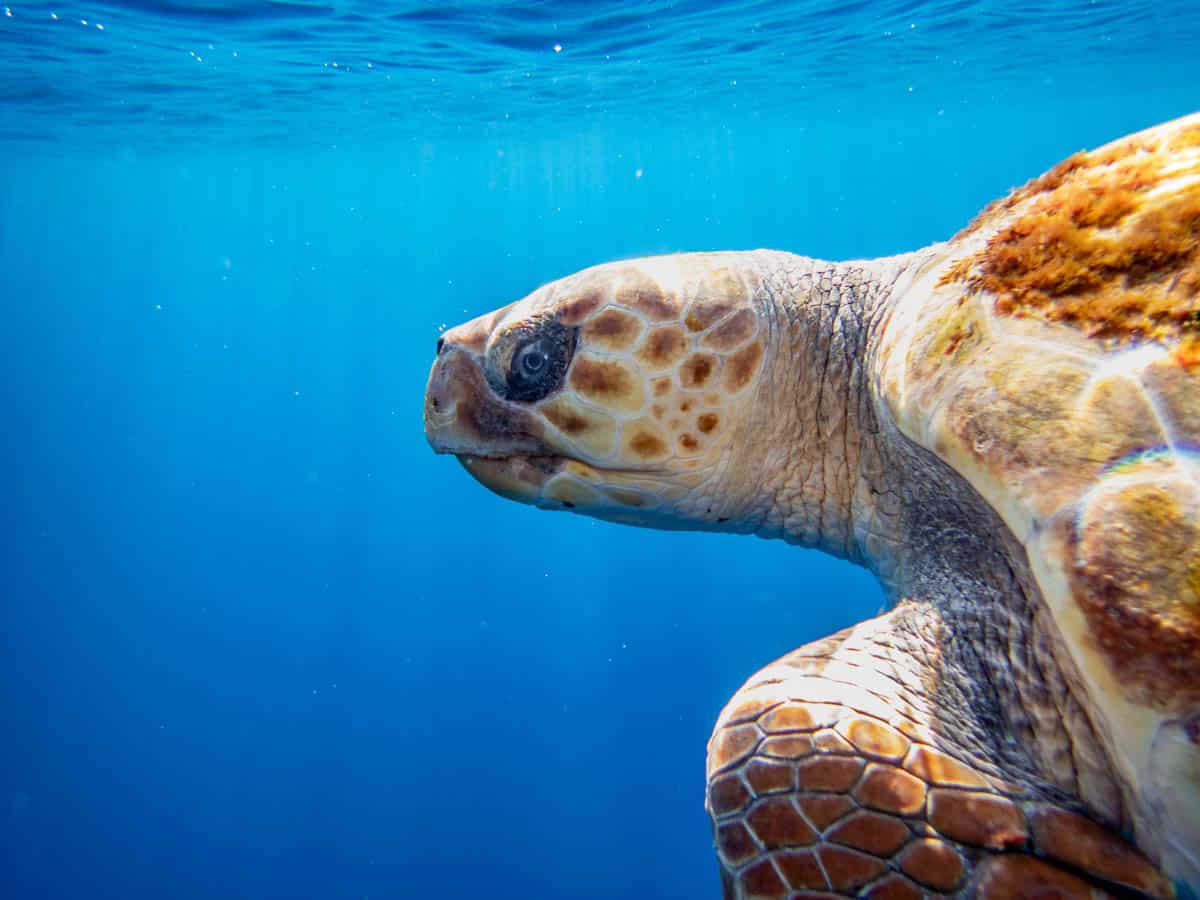
Loggerhead turtle
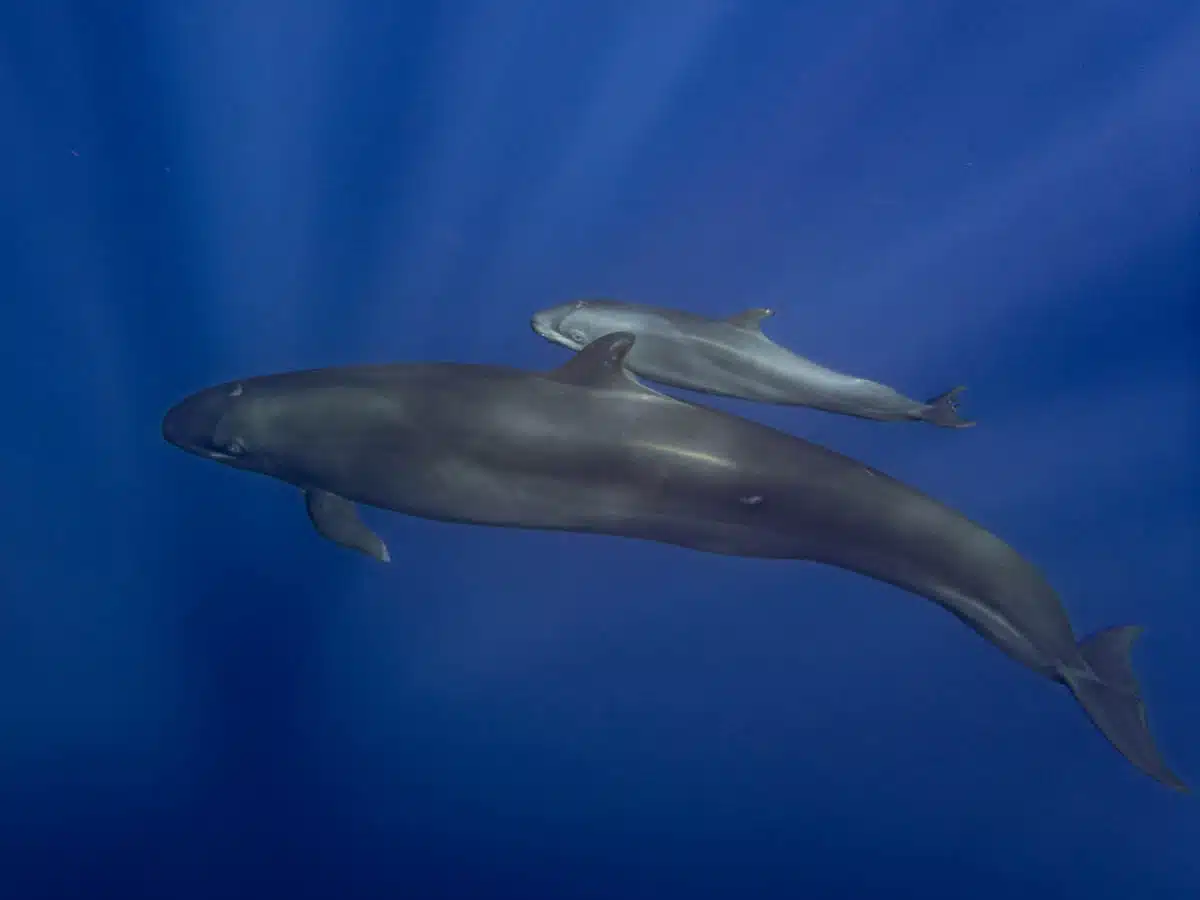
False killer whales

False killer whales
But perhaps the most special moment was his encounter with a sperm whale calf.
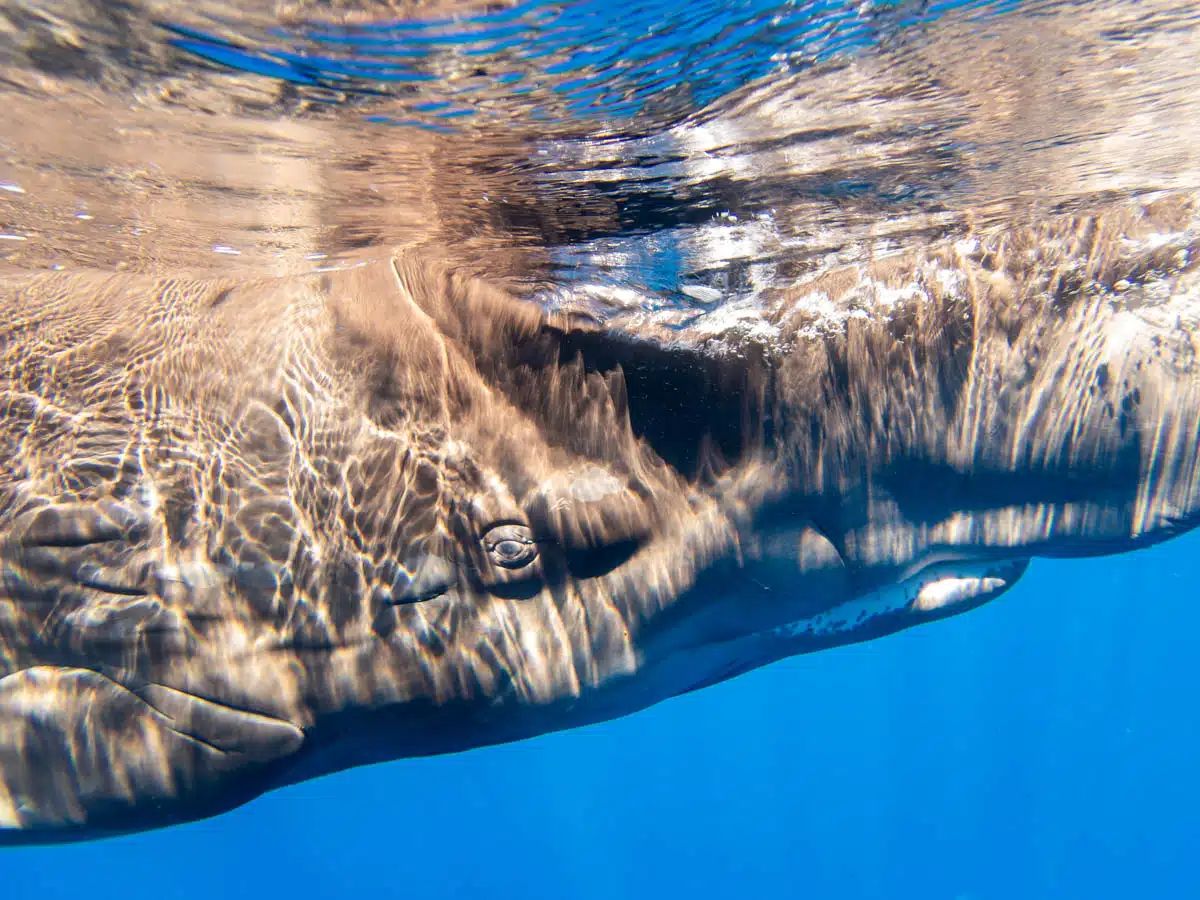
Sperm whale
Sperm whale populations in the Azores have rebounded since hunting was banned in 1984.

Sperm whale
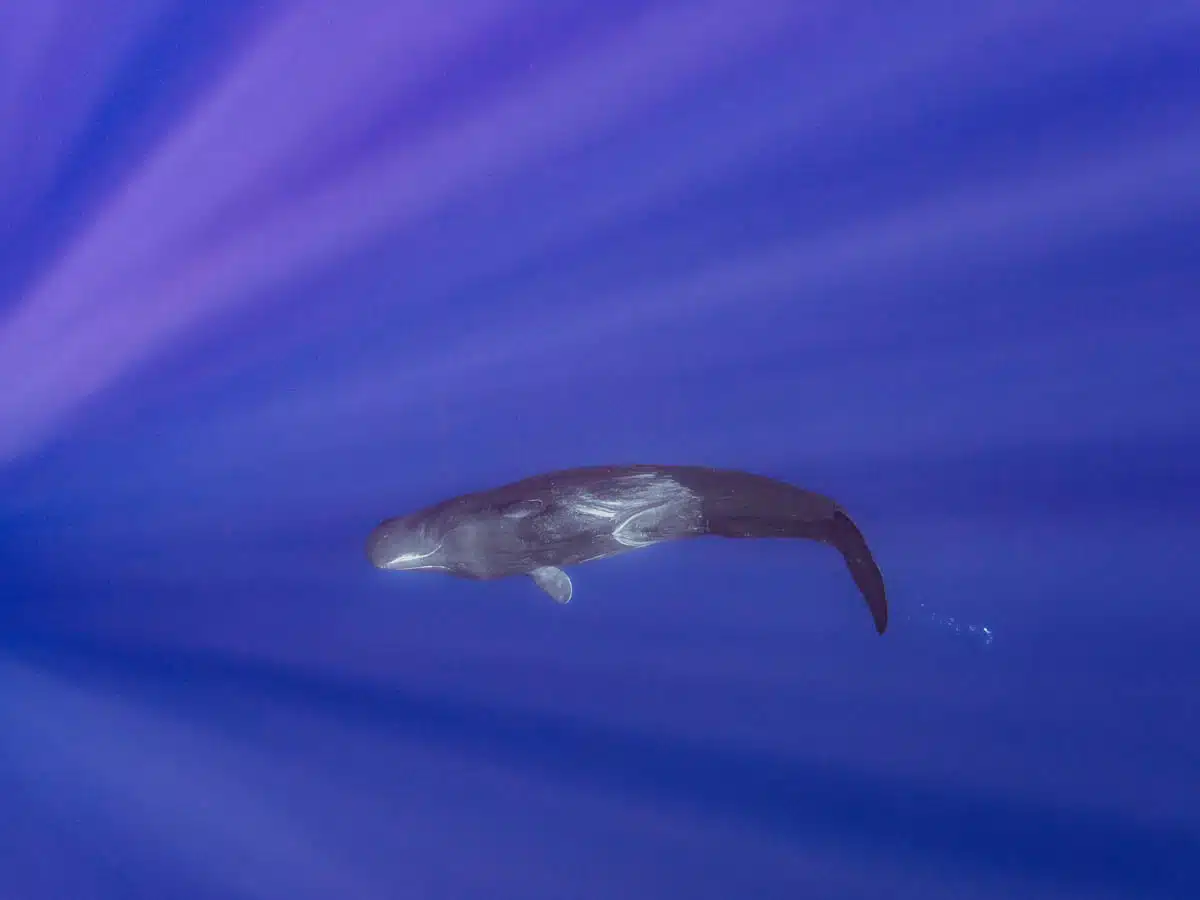
Sperm whale

Sperm whale
